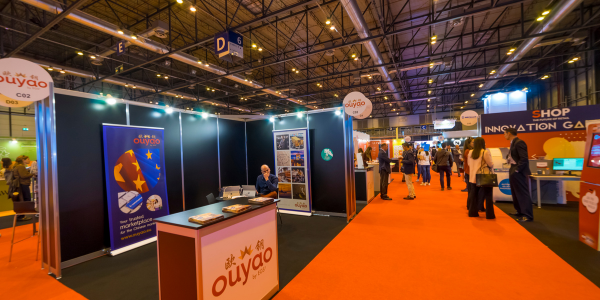
The exhibitions industry generates £10.9bn for the UK economy, according to the latest economic impact report from the Events Industry Alliance (EIA).
The £1.5bn increase from the EIA’s previous study is attributed to a 12% increase in the number of shows that took place during 2023. Last year, around 1,016 UK exhibitions were held and attended by 6.92 million people (+14%).
After accounting for indirect and induced impacts, UK exhibitions contributed £5.5bn in total GDP – a £0.9bn increase on the previous year’s calculations.
Marija Erzen, ESSA and EIA chair, said: “A 17% growth between 2022 and 2023, demonstrates that, whilst other areas of the economy are struggling, the exhibitions industry is growing exponentially in a challenging economic environment and with little help from the Government.
“These figures bring us just shy of our pre-pandemic levels of economic impact (£11bn). The events industry’s strong growth demonstrates our potential and resilience as an industry during an economically challenging year for many. We hope these positive figures encourage the next Government to take note and pay attention to our industry.”
This report, the fifth of its kind, was first compiled in 2005 by KPMG and updated by Oxford Economics using the same metrics and indicators in 2011. Since then, Oxford Economics has continued to refine its methodology and since 2019, it has integrated data from the EIA’s Size and Scale Index of Events (SASIE) report.
The EIA’s Economic Impact Study also calculates that in 2023, UK exhibitions contributed around £37,000 in direct spending per exhibitor. Based on a total of 0.60 million sqm of venue capacity measured in terms of gross indoor exhibition space (as reported in UFI’s World Map of Venues), direct spending per sqm of venue capacity amounted to £7,957.
Rachel Parker, director, AEV and EIA said: “Positive growth feeds into other areas of the economy and helps explain the dynamic and far-reaching potential of exhibitions.”

![Perth Theatre and Concert Hall's 125 Live! delivers economic and community impact Perth_125_(600×300)[1]](https://eventsbase.co.uk/wp-content/uploads/2025/09/Perth_125_600x3001.png)
![Lammermuir Festival reports hugely successful year as economic impact tops £1 million for the first time. Lammermuir_Festival[1]](https://eventsbase.co.uk/wp-content/uploads/2024/12/Lammermuir_Festival1.png)
![EICC closes in on £1 billion of economic impact as Scotland’s leading conference centre marks 30th anniversary EICC_(600×300)[1]](https://eventsbase.co.uk/wp-content/uploads/2025/09/EICC_600x3001.png)
